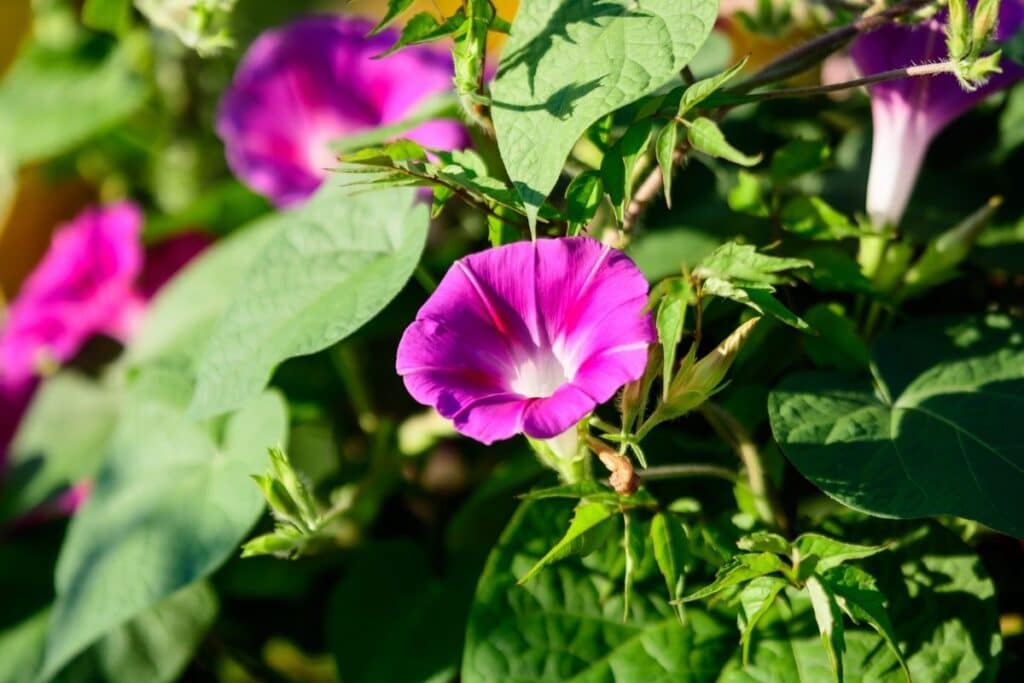Morning glory flowers are scientifically known as the Convolvulus purpureus flower or Ipomoea purpurea. They can be found in many areas of the world, and they have even been considered as weeds, mainly because of their fast-growing nature.
There are several different types of morning glory flowers, and we will look at them in this article. They also come in many different colors such as white, cream, yellow, purple, blue, bi-color, and hot pink.

If you are thinking about planting some morning glory flowers or are just curious about them, continue reading this article and become familiar with this type of plant!
Facts about Morning Glory Plant
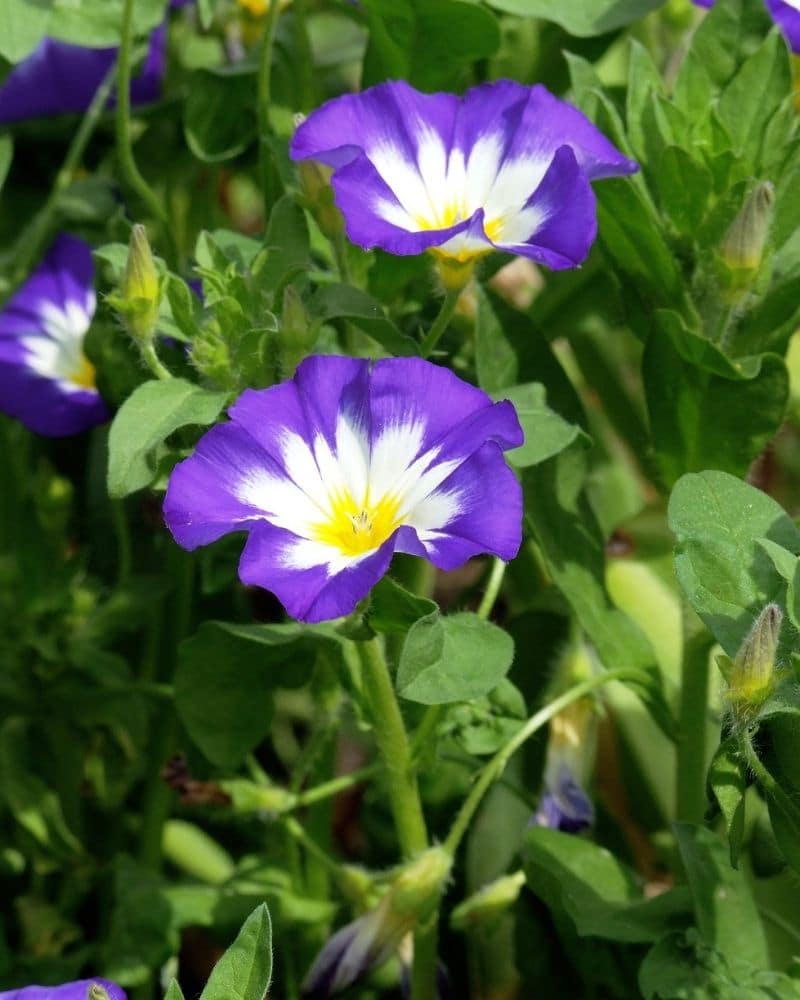
- Morning glory flowers belong to the Convolvulaceae family of plants.
- Most morning glory flowers are found in the Americas (1), specifically in countries such as Bolivia (2).
- Most morning glory flowers will bloom early in the summer.
- They are known for attracting pollinators such as bees, hummingbirds, and different types of birds.
- Morning glories are drought-tolerant; they do not need to be continuously watered.
- They can also self-seed relatively quickly.
- Morning glory flowers are considered annual vines; they are great at climbing and finding their own path.
- As its name suggests, these flowers will bloom in the morning, and they will only last a day.
How to Grow Morning Glory Flowers
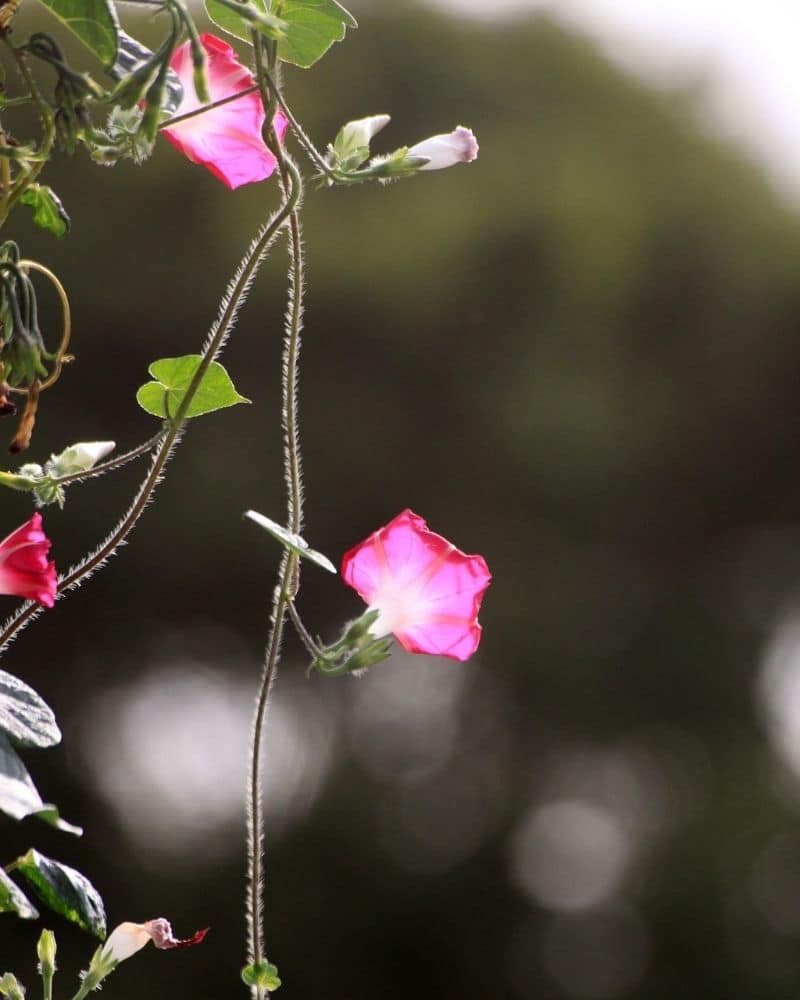
Did you know that morning glories are easy to maintain? In fact, if you are considering planting some of them, you will not need to do much to make them thrive and grow healthily.
You do need to remember the following things:
- Morning glory plants need to be placed in well-drained soil.
- You should water them if it’s scorching outside or if you are going through a dry period.
- If you plant them in a container, then you will need to water them more, at least four times a week.
- It would be best if you watered them every couple of weeks during winter.
Morning Glory Pests and Diseases
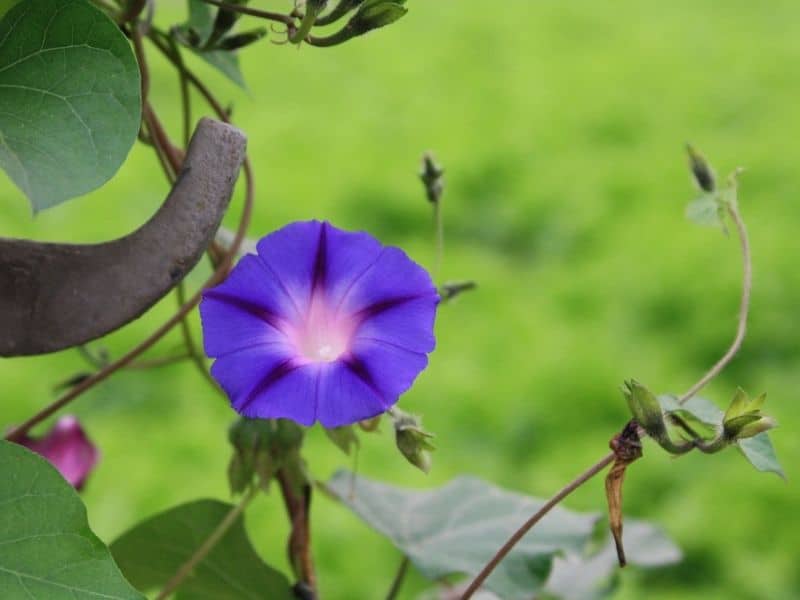
Even though most of the time, morning glories will be left alone by diseases or pests, they can eventually suffer from these issues, especially if they are out in the wilderness.
If your deep purple flowers have a fungus, then you should stop watering them until they improve their condition. If, on the other hand, your flower is being attacked by pests, then you can always plant a right companion plant that will protect your morning glories.
Morning Glory Uses
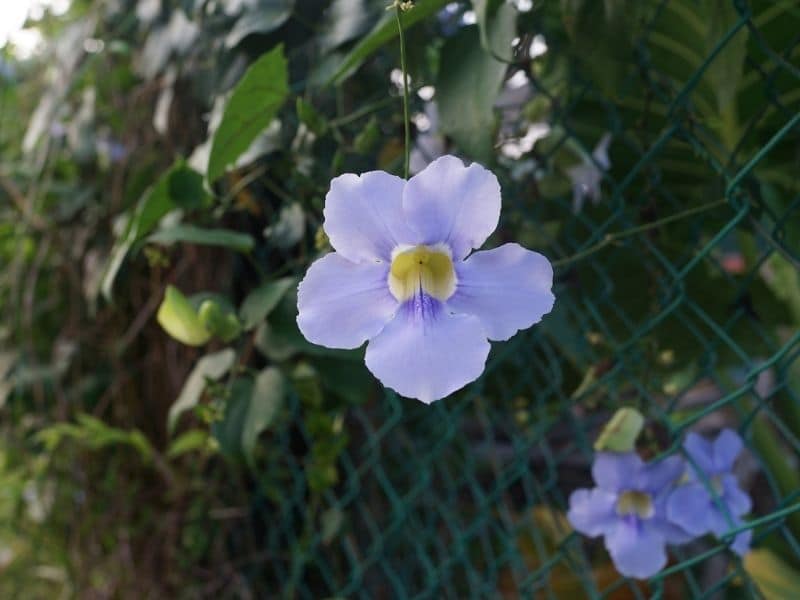
Morning glory is a protective species. These flowers are often used in landscaping because its vines will provide ample shade and privacy (which is always an excellent choice, especially if you have neighbors).
Popular Types of Morning Glories You Can Grow
There are several types of morning glory flowers. These are the most common ones:
Cardinal Climber
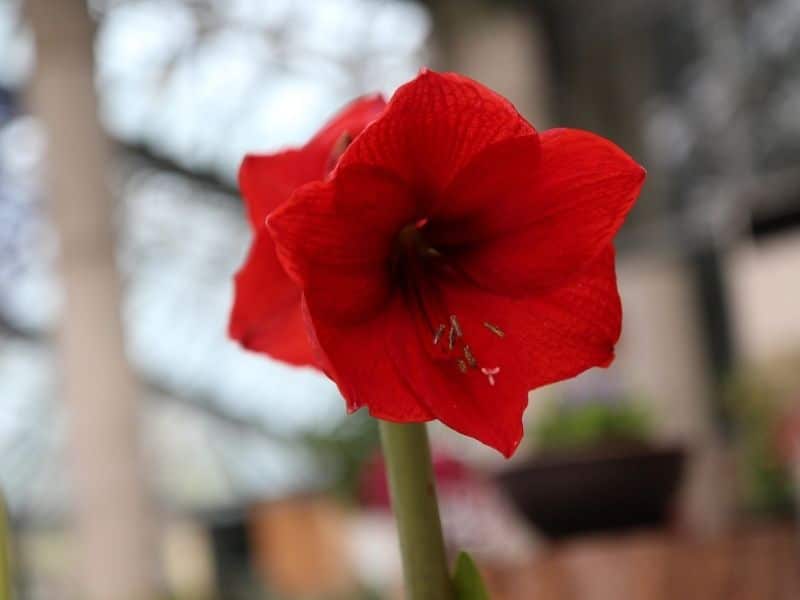
This flower is scientifically known as Ipomoea x multifida. It will thrive in warmer areas (as it prefers to be fully exposed to the sun), and it can reach 12 feet tall if left in the wilderness.
This morning glory flower has bright red petals, and it is one of the most welcoming plants in nature, as they are really attracted to this color.
Heavenly Blue

Also known as Ipomoea tricolor. They tend to grow up to 12 feet tall. They will thrive in hot climates, where they are able to receive full sun. As its name suggests, this flower is blue and purple, but it also has a white and yellow center, making it truly unique.
See more: Beautiful Blue Flowers and Pictures
Common Morning Glory

This flower is scientifically known as Ipomoea purpurea. It is one of the most beautiful flowers as it has a very bright and vibrant purple and white color. It will grow up to 10 feet tall, and it will thrive the best if placed directly under the sun.
Moonflower
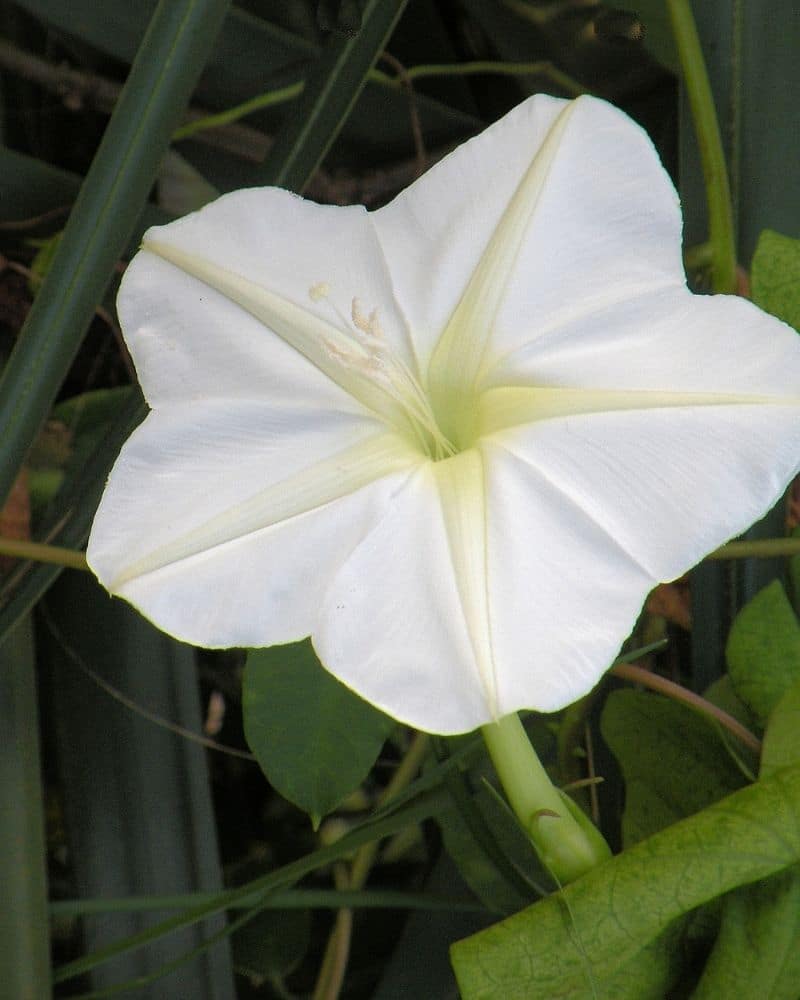
Moonflower plant is scientifically known as Ipomoea alba. They are all white (although sometimes they can have a yellow or cream center), and they will grow up to 15 feet tall.
This morning glory flower is unique because, as its name suggests, not only does it bloom at night, but it also releases a powerful fragrance throughout its blooming time.
Beach Morning Glory

They are sometimes referred to as railroad vine as well. It is scientifically known as Ipomoea pes-caprae. It needs to be planted in an open area where they receive full sun in order to thrive. They are one of the morning glories that will bloom late in the summer.
This flower has vibrant pink petals and a darker pink tone to it. As its name suggests, the beach morning glory prefers sandy soil.
Flying Saucers
These flowers are scientifically known as Ipomoea tricolor. They can grow up to 12 feet tall, and they need to be fully exposed to the sun in order to be healthy. They have an interesting shape, hence its name, as they resemble flying saucers! These flowers have white and silver petals, with a blue tone as well.
Cairo Morning Glory
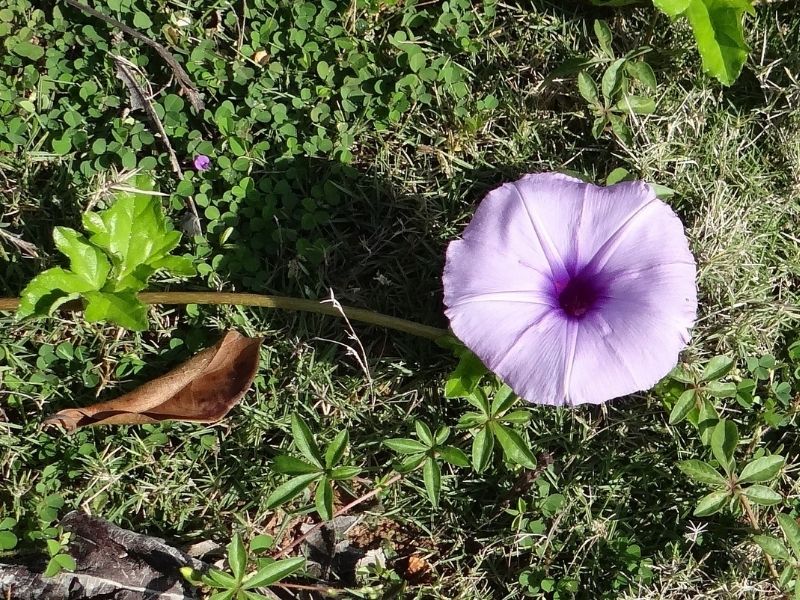
This flower is scientifically referred to as Ipomoea cairica. They can grow up to 10 feet in height and need to be fully exposed to the sun in order to thrive. These purple vines have bright purple petals.
Ivy Morning Glory
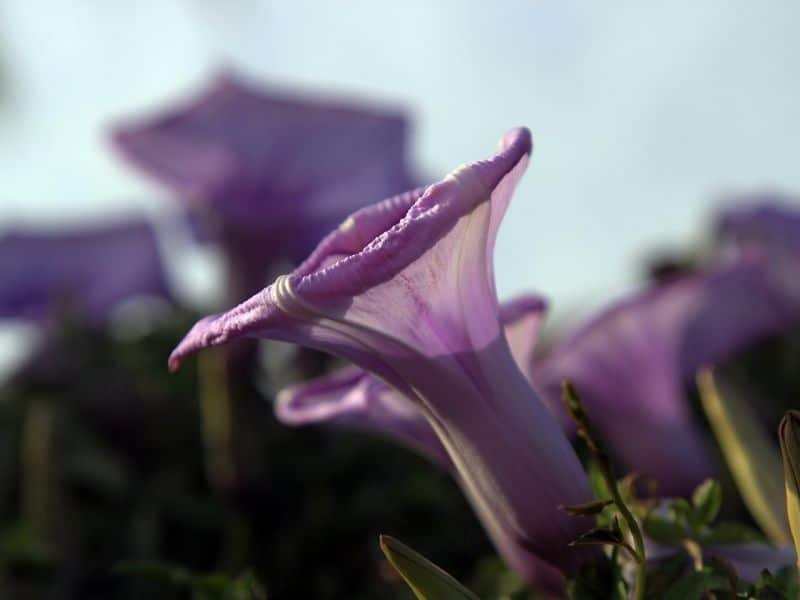
Sometimes referred to as Ipomoea nil. It tends to grow up to 8 feet long. It has purplish-blue petals, and some of them also have white and purple centers. They are simply stunning!
See more: Best Types of Purple Flowering Plants
Red Picotee
This morning glory is definitely one of the unique flowers you will ever see! They have pointed pink petals, and they tend to be joined together, which makes them truly beautiful, especially when they spread out.
Japanese
This flower is very similar to the Red Picotee variety; however, the Japanese version has a darker pink tone compared to the red picotee. In addition, it also has white stripes that make it very unique.
Hawaiian Bell
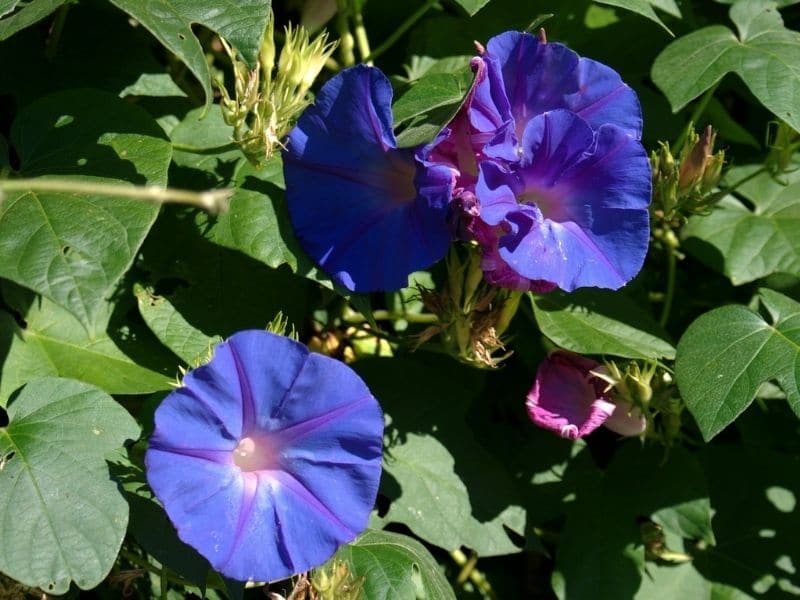
They are also known as Stictocardia. They are one of the few morning glories that can grow under the sun’s shade and the sun. They tend to bloom throughout the early spring months of December and January, but they can also grow in June and July.
Scarlett O’Hara Morning Glory
This beautiful flower has scarlet petals with white centers. They can grow up to 10 feet in height and prefer to be under the direct sun to thrive.
FAQs
All of your questions are answered here!
Are morning glory flowers poisonous?

Yes, morning glory flowers are poisonous! And so many individuals will not believe this, especially if you consider how lovely these flowers are. All of the morning glory seeds are highly poisonous, mostly if they are consumed in large quantities. If you have these trumpet shaped flowers in your garden, make sure no children or pets will consume them (3).
See more: Common poisonous flowers and plants you should know
Are morning glory flowers hallucinogenic?

Yes, they are! Many indigenous communities worldwide (such as the Aztecs) have used morning glory flowers precisely because of its hallucinogenic effects. However, apparently, only the Ipomoea tricolor has psychoactive properties. This is not to say you should try it, because they are still highly poisonous!
Can morning glory flowers be planted indoors?
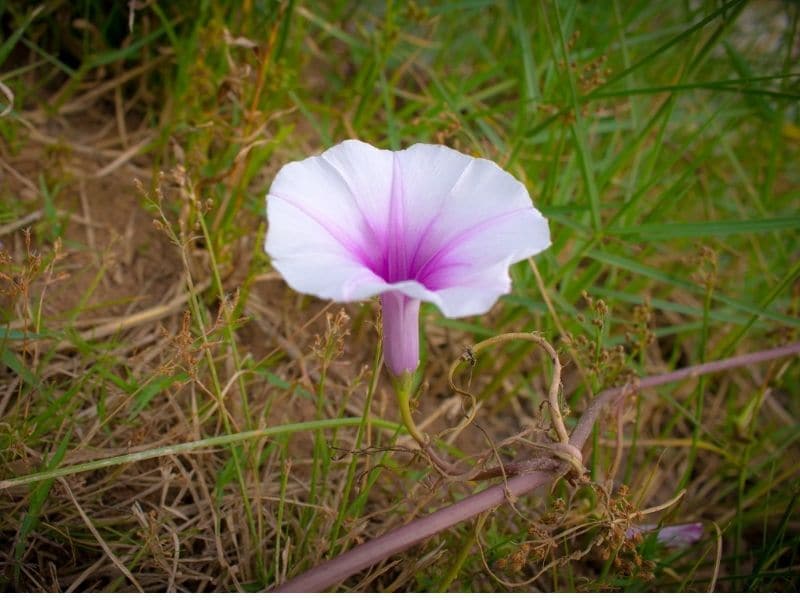
You could plant them indoors, but I would only recommend you do so if you don’t have any children or pets around. Otherwise, it is advisable to plant them outdoors if you have enough space.
You can quickly grow the flowers’ seeds indoors and then move them outdoors if you live in a very cold area; just make sure they receive plenty of sunlight!
What’s the difference between morning glory and bindweed?
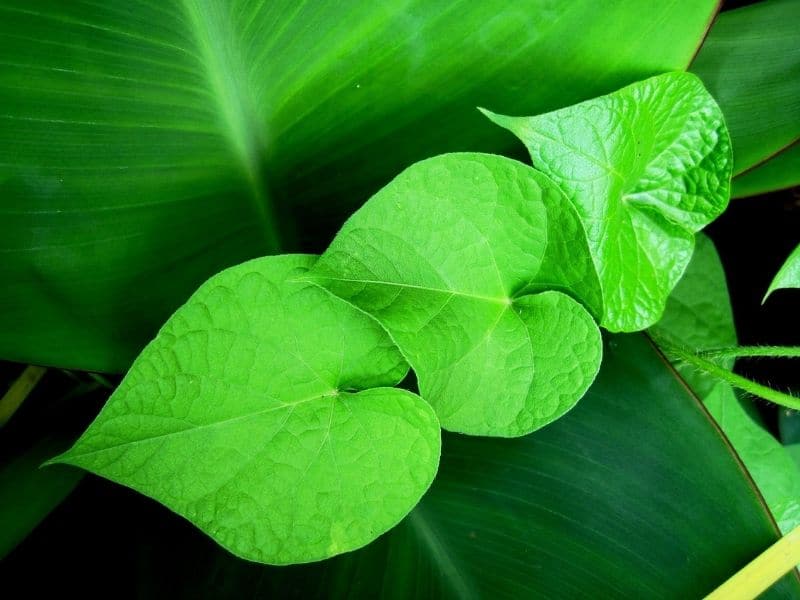
These two types of flowers are always confusing people because they look alike. However, even though they are distant relatives, the morning glory is the Ipomoea spp. And the field bindweed is the Convolvulus arvensis, and they are not the same.
The field bindweed is usually considered an invasive weed in many countries, and people will do everything they can to remove them from their gardens.
If you are not sure which one you have, take a closer look at their heart shaped leaves, flowers, and vines. Here are some clues for you to find out which one you have:
- Field bindweeds tend to be smaller than the morning glory flowers.
- Morning glories usually have heart-shaped petals, whereas, bindweeds have a more oval shape.
- Field bindweeds tend to be pink or white, whereas, we now know morning glories can be red, purple, white, cream, yellow, magenta, and blue.
- Morning glory vines usually have small hairs, whereas, bindweeds won’t have them.
- If you come across some in your garden and haven’t planted them, they are probably bindweeds and not morning glory flowers.
FAQs
Can morning glory be in full sun?
Morning glories thrive in full sun to partial shade. While they can tolerate some shade, they typically produce more flowers and vigorous growth in full sun.
Is morning glory an indoor plant?
Morning glory is primarily grown outdoors as an annual or perennial vine. While it can be grown indoors in containers, it requires ample sunlight and support for climbing.
Do morning glories come back every year?
Yes, Morning glories are typically grown annually in most climates, meaning they complete their life cycle in one growing season. However, they may self-seed and return the following year in suitable conditions.
Is morning glory a permanent plant?
No, Morning glory is not considered a permanent plant, as it typically grows as an annual or perennial vine that completes its life cycle within one to a few years. However, self-seeding may result in new plants in subsequent years.
Is morning glory hard to grow?
No, Morning glories are generally easy to grow from seeds and require minimal care once established. However, they may need support for climbing, and in some regions, they can self-seed and become invasive if not controlled.
How long should morning glory last?
Morning glory flowers typically last for one day, opening in the morning and fading by late afternoon or evening. However, new flowers continue to bloom daily throughout the flowering season, which can last for several weeks.
What do morning glories symbolize?
Morning glories symbolize love, affection, and renewal. Their vibrant, trumpet-shaped flowers that bloom in the morning represent the fleeting beauty and transient nature of life and love.
Conclusion
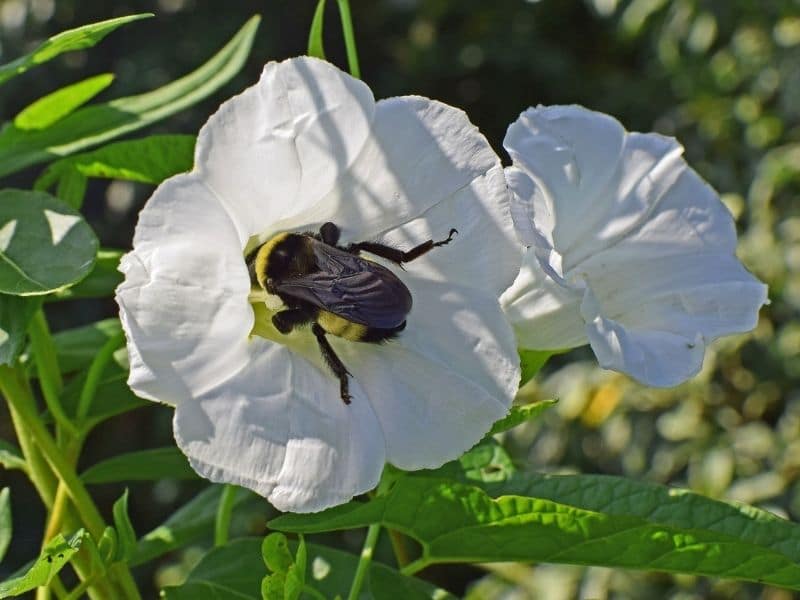
In conclusion, mastering how to care for morning glory plants opens the door to a world of vibrant blooms and enchanting tendrils that add beauty to any garden or outdoor space.
These resilient and versatile plants reward care and attention with a profusion of colorful flowers that open in the morning sunlight, filling the air with their sweet fragrance.
With the tips provided here, you’re equipped to create a stunning garden retreat where you can enjoy the simple pleasures of nature and the timeless allure of morning glories.
Up Next: Morning Glory Flower Meaning and Symbolism
References
Reference List:
(1) Wood, J., Muñoz-Rodríguez, P., Degen, R., & Scotland, R. W. (2017). New species of Ipomoea (Convolvulaceae) from South America. PhytoKeys, (88), 1–38. https://doi.org/10.3897/phytokeys.88.12891
(2) Wood, J., Martinez Ugarteche, M. T., Muñoz-Rodríguez, P., & Scotland, R. W. (2018). Additional notes on Ipomoea (Convolvulaceae) in Bolivia. Kew bulletin, 73(4), 57. https://doi.org/10.1007/s12225-018-9784-z
(3) Ríos, E. E., Cholich, L. A., Chileski, G., García, E. N., Lértora, J., Gimeno, E. J., Guidi, M. G., Mussart, N., & Teibler, G. P. (2015). Suspected natural lysosomal storage disease from ingestion of pink morning glory (Ipomoea carnea) in goats in northern Argentina. The Journal of veterinary medical science, 77(7), 847–850. https://doi.org/10.1292/jvms.14-0317
Close
Image by depositphotos.com/[email protected]

